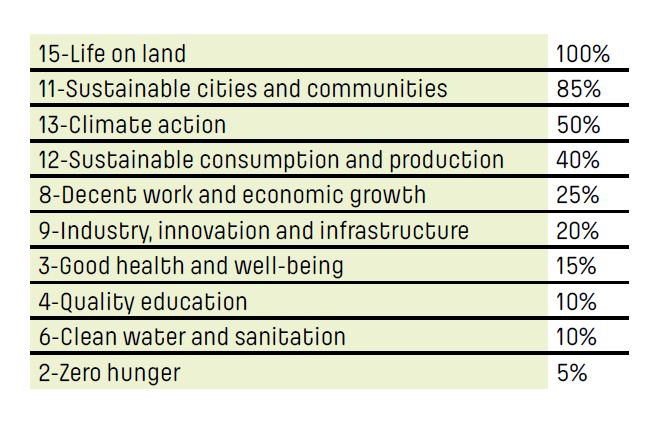Innovating with urban forests to meet the Sustainable Development Goals
Uforest, an Erasmus+ project, is aiming to fill the cities of Europe with trees and help overcome socio-environmental challenges through sustainability. That is no simple task, however. Innovative solutions for planning, designing, implementing and managing urban forests are required, and an interdisciplinary perspective encompassing the social, ecological, cultural and economic aspects of such forests is vital if cities are to make the most of the potential benefits trees offer them. In September, a team led by CREAF and the Autonomous University of Barcelona (UAB) published a report on innovation in urban forestry entitled EU Innovation Blueprint: Analysing factors influencing innovation within Urban Forestry.
The report features an analysis of 20 case studies from around Europe, including public, private, and public-private sector initiatives alike. The selected case studies are notable for their scope for innovatively dealing with the challenges of urban forestry and meeting the Sustainable Development Goals (SDGs), integrating areas as diverse as urban planning, forest ecology, socio-economics, and information and communication technologies.

According to the DPSIR model adopted by the European Environment Agency, any process, outcome or creative mindset in response to a problem — any innovation, in other words — stems from a conflict that acts as a driving force behind it. With that in mind, the report identifies the seven main challenges in urban forestry — growing conditions; disservices; social equity; governance; funding and economic development; training gaps; and knowledge gaps and use of technology — as drivers of innovation. In a local ecological, social, cultural and economic context, those challenges become springboards to the global SDGs.
Opportunities for innovation in urban forestry

The study shows that 90% of the case studies analysed offer solutions to the challenge of funding and economic development, which covers aspects such as diversifying funding, encouraging employment, promoting a forest bioeconomy, using low-cost systems, and developing professionalism. Nonetheless, the cost-benefit ratio of the ecosystem services they offer has yet to be determined. Lower down the scale, fewer of the case studies address the challenge of governance, so there are still opportunities to work on overcoming tensions and contradictions between different urban social groups. Furthermore, none of the case studies provides solutions to the challenge of disservices (i.e. the negative effects of urban forests) or to the issues of green gentrification and displacement, which are aspects of the challenge of social equity. There is, thus, great potential for innovation in that regard.

As far as the SDGs are concerned, 100% of the case studies analysed are in line with SDG 15 —life on land — in that they are geared to tree-planting, the conservation of biodiversity, sustainable forest management, the restoration of degraded soil, and/or the removal of alien plant species. Additionally, many of the case studies tackle aspects of environmental justice, such as accessibility to green areas and raising awareness of the climate crisis (SDG 11 — sustainable cities and communities — and SDG 13 — climate action). Bringing up the rear are SDGs 2, 3, 4 and 6, which, respectively, target zero hunger, good health and wellbeing, quality education, and clean water and sanitation. None of the case studies addresses SDG 1, 5, 7, 10, 14, 16 or 17, leaving scope for work on each of them.
Lastly, the report observes that innovation in urban forestry is mainly incremental; in other words, most of the case studies involve small improvements to pre-existing solutions to adapt them to each context’s specific circumstances. That opens up a range of opportunities for the development of processes, outcomes and innovative mindsets of a complementary, radical or disruptive nature.

"This report helps to situate urban forestry as a forward-looking discipline, identifying opportunities for and obstacles to the introduction of new initiatives and defining the innovation processes that lead to their materialization."
JOAN PINO VILALTA, director of CREAF
New urban forestry
Uforest is about to launch a theoretical and practical training programme developed by the four universities participating in the project: the UAB, Trinity College Dublin (TCD), Transilvania University of Brașov (UNITBV) and the Polytechnic University of Milan (POLIMI). The programme is designed to train the next generation of urban foresters, professionals who will be capable of using urban forests, one of the most versatile nature-based solutions (NBS), to tackle cities’ multidimensional challenges.
After completing two online courses and an innovation programme, the new batch of urban foresters will have the knowledge and skills necessary to promote the green transition of cities in a creative, cross-cutting, and scientifically rigorous fashion.







